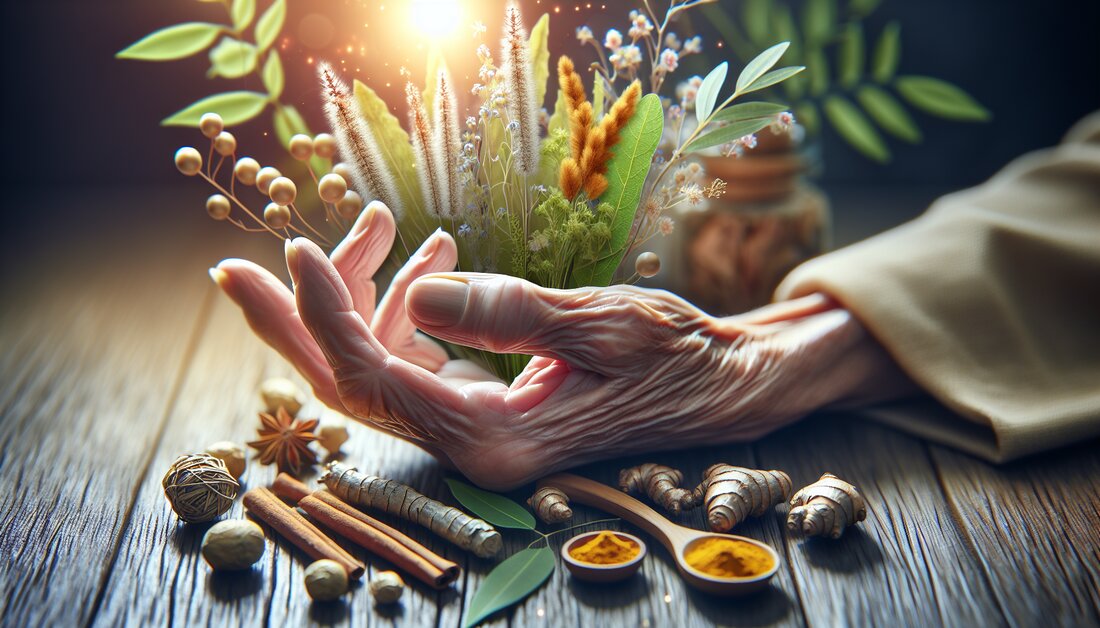Naturopathy for Arthritis: A New Hope for Pain Relief
New study shows: Naturopathic methods can relieve arthritis pain! #Health #Arthritis

Naturopathy for Arthritis: A New Hope for Pain Relief
Arthritis is a disease that affects millions of people and has a significant impact on physical health and quality of life. Symptoms such as swelling, inflammation and pain often require lengthy treatment. In this regard, naturopathy offers a holistic approach that strengthens the body's natural potential to restore optimal health through natural products and lifestyle changes. A systematic review examined the connection between naturopathy and the treatment of arthritis to provide current evidence on its potential benefits.
The research searched four databases (PubMed, AYUSH Research Portal, Web of Science and Google Scholar) and selected studies that addressed the use of naturopathy in the treatment of arthritis. The analysis included randomized, non-randomized, and cross-over studies written in English and reporting pain perceptions using a visual analogue scale (VAS). A total of 15 studies were included in the systematic review. These came from different countries and covered a period from 1992 to 2017. They suggested that naturopathic treatment methods such as exercise therapy, mud packs, sand baths or hydrotherapy could be used in addition to conventional treatment methods to provide additional benefits.
There are a variety of naturopathic treatment modalities and methods for evaluating results. Most studies used mud packs or mud baths and reported improvement in symptoms. The meta-analysis of 10 studies (11 data sets) showed a significant improvement in pain measured by the VAS. However, the studies included in the review show a high degree of heterogeneity. There is a need for further studies and consistent assessment methods with standardization of interventions to provide robust evidence. Further clinical studies from countries where naturopathy is approved as a treatment method are needed.
The potential future impact of this research could be significant. If additional, well-designed studies support the effectiveness of naturopathic treatment methods for arthritis, this could lead to broader acceptance and integration of such methods into traditional treatment plans. This would not only expand the treatment options available, but also potentially improve the quality of life of those affected by making more individualized and holistic treatment approaches available.
Basic terms and concepts:
- Arthritis: Eine entzündliche Erkrankung der Gelenke, die Schmerzen, Schwellungen und eingeschränkte Beweglichkeit verursachen kann.
- Naturheilkunde: Ein Bereich der Medizin, der den Fokus auf natürliche Heilmethoden und die Fähigkeit des Körpers zur Selbstheilung legt.
- Systematische Übersicht: Eine umfassende Zusammenfassung der medizinischen Forschung zu einem bestimmten Thema, die strenge methodische Kriterien verwendet, um Verzerrungen zu minimieren.
- Meta-Analyse: Eine Methode zur Zusammenfassung der Ergebnisse verschiedener Studien zu einer Frage, indem ihre Ergebnisse statistisch kombiniert werden.
- Visuelle Analogskala (VAS): Ein Messinstrument, das dazu dient, eine Eigenschaft oder Eigenschaft, die sich über ein Kontinuum erstreckt (wie Schmerz), zu quantifizieren.
Key result: Significant improvement in pain through natural healing methods for arthritis
The systematic review and meta-analysis examined the effectiveness of naturopathic treatments in the treatment of arthritis. Studies obtained from databases such as PubMed, AYUSH Research Portal, Web of Science and Google Scholar were included, with the keywords “naturopathy” AND “arthritis”. Randomized, non-randomized, and crossover studies in English were considered. Studies were specifically selected that measured perceived pain using a visual analogue scale (VAS). A total of 15 studies were included in the systematic review, conducted between 1992 and 2017 in countries such as Denmark, Egypt, France, Hungary, Israel, Italy, Spain and Turkey.
Methodology and results
The studies included in the analysis demonstrated diversity in naturopathic treatment modalities and outcome assessment methods. The most commonly used natural healing methods included exercises, mud compresses, sand baths or hydrotherapy. Mud compresses or baths in particular have been widely used and have shown reported improvement in symptoms.
A meta-analysis of 10 studies (11 data sets) suggested significant improvement in pain measured by VAS. Despite the positive results, the studies show a high degree of heterogeneity. This highlights the need for further research and unification of assessment methods and standardization of interventions to provide robust evidence.
Research needs and implications
There is a need for additional studies and consistent assessment methods with standardization of interventions to obtain robust evidence. Furthermore, more clinical studies are needed from countries where naturopathy is recognized as a treatment method. These findings could help expand the evidence base for the use of naturopathic treatments in arthritis treatment and potentially lead to integrative treatment approaches that combine conventional and naturopathic therapies.
The systematic review supports the idea that naturopathic treatments have the potential to be beneficial in the complementary treatment of arthritis, but at the same time highlights the importance of further research to support these preliminary findings. The heterogeneity of the studies also shows the complexity of researching naturopathic treatment approaches and the challenges in standardizing such interventions.
For a detailed analysis of the study results, methodology and further discussions, please refer to the original research paper:

 Suche
Suche
 Mein Konto
Mein Konto
